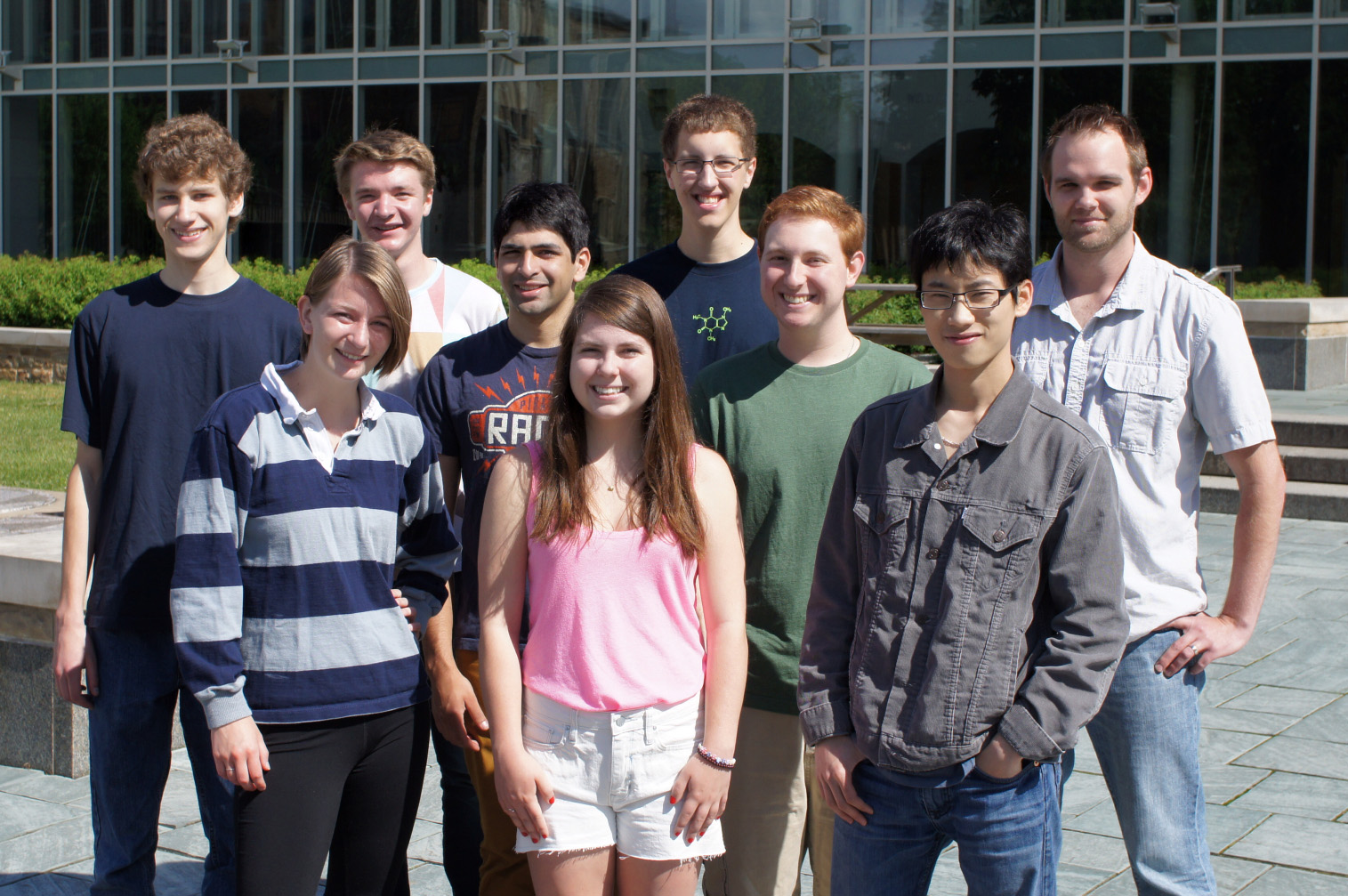
Although hundreds of students enroll in science courses every semester, doing summer research is “so much different than any lab class,” says Hannah Ferris ’16. Ferris, who is conducting organic synthesis methodology research under the auspices of Assistant Professor of Chemistry Max Majireck, is so fascinated by the project that she will be continuing her research with an independent study in the fall.
Ferris, a biochemistry major, is working independently to synthesize pyridinium salts even though she is also part of the eight student team working on organic synthesis methodology with Professor Majireck.
John Bennett ’16 and Yingbin Mei ’16, a chemistry and math double major and biochemistry major respectively, are working together to develop new synthesis reactions of alkynes and azides in order to form triazoles and to identify the active compounds in the molecules of transition metal catalysts like copper, ruthenium and rhodium.
The final group is using hydroamination with the hopes of streamlining the process of making pyrrolizidines and indolizidines. In this group are Esther Cleary ’15, a chemistry major; Alex Kaplan ’16, a biochemistry and Hispanic studies double major; Benjamin Schafer ’17, a chemistry and physics double major; Benjamin Wesley ’16, a biochemistry major; and chemistry major Christopher Williams ’17.
Collectively, the research team is creating molecules that react neurologically. Although the molecules can be found in naturally occurring compounds, many have not been synthesized in a laboratory setting before. “There isn’t a lot of prior research and these molecules aren’t well understood, so we’re discovering brand new things,” Ferris enthusiastically explained.
The students use advanced methods such as Nuclear Magnetic Resonance (NMR) spectroscopy, Infrared (IR) spectroscopy, Gas and Liquid Chromatography–Mass Spectrometry (GCMS and LCMS), and X-ray Crystallography, as well as equipment like the CombiFlash.
The students are discovering some of these synthesis reactions, while they are trying make others more efficient: requiring less energy and producing fewer byproducts. The molecules have biomedical implications, being similar to neurotransmitters that can cross the blood-brain barrier, they could be used to treat diseases or otherwise improve human health.
The research group is partnered with the Broad Institute of MIT and Harvard, to whom they will eventually send the molecules for medical research testing.
Members of the Broad Institute will then screen test the molecules to see which disorders or diseases they could treat. It’s possible that they will not yield any results, but Kaplan was not discouraged by this. He said, “[we] don’t know what [they] can be used for but that’s why it’s exciting!”
John Bennett graduated from Lake Ridge Academy in North Ridgeville, Ohio.
Esther Cleary graduated from Bow High School (N.H.)
Hannah Ferris is a graduate of Holland Patent High School ( N.Y.)
Alex Kaplan graduated from Marjory Stoneman Douglas High School in Parkland, Fla.
Yingbin Mei is a graduate of Millennium High School in New York City, NY.
Benjamin Schafer graduated from Dover-Sherborn Regional High School (Mass.)
Benjamin Wesley is a graduate of Westford Academy (Mass.)
Christopher Williams graduated from Hendrick Hudson High School in Montrose, N.Y.
Posted June 23, 2014
